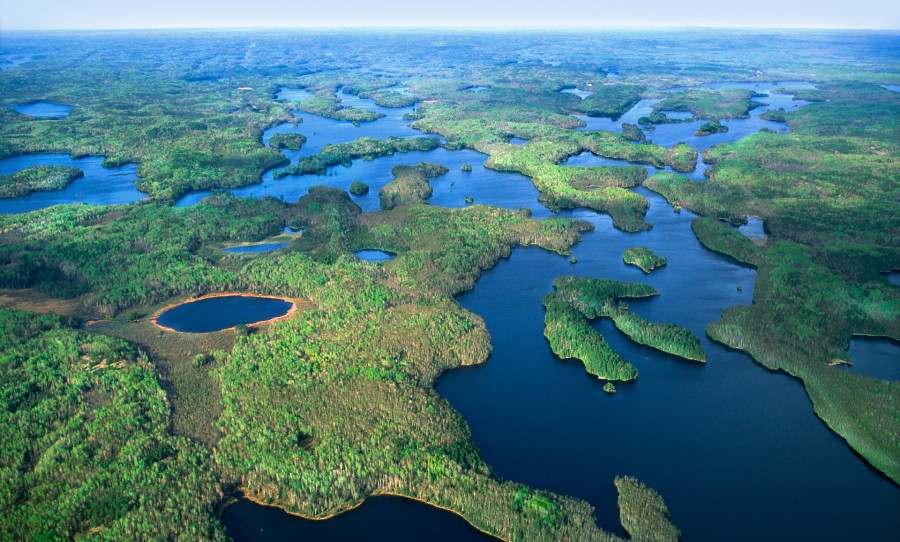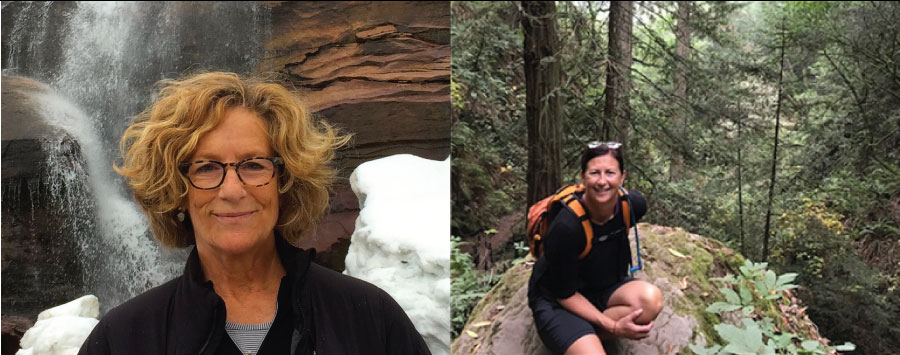
Conservation Alliance grantee Northeastern Minnesotans for Wilderness is working to ban mining on 234,328 acres surrounding the Boundary Waters, protecting the Boundary Waters Canoe Area Wilderness (1.1 million acres), Voyageurs National Park (218,200 acres), and Canada’s Quetico Provincial Park (1,180,000 acres) from sulfide-ore copper mining pollution. Deputy Campaign Manager, Samantha Chadwick, shares an important campaign update and action alert to help Save the Boundary Waters.
Wilderness to the people of America is a spiritual necessity, an antidote to the high pressure of modern life, a means of regaining serenity and equilibrium.” These are the words of Sigurd Olson, author, and environmentalist who was also a champion for the protection of the Boundary Waters Canoe Area Wilderness. Right now is a critical moment for the protection of the Boundary Waters from proposed sulfide-ore copper mining.
Recently, the Department of the Interior reinstated two expired mineral leases for the benefit of Chilean-owned Twin Metals Minnesota right near the edge of the Boundary Waters. A few weeks later, Twin Metals released a plan to move its proposed mining operations even closer to the Boundary Waters, locating a proposed industrial concentration facility on the banks of Birch Lake. Sulfide-ore copper mining this close to the Wilderness is inherently dangerous and will cause damage that cannot be prevented or fixed. The Boundary Waters is too special to put at risk.
America’s most visited Wilderness.
The Boundary Waters Canoe Area Wilderness is America’s most visited wilderness. It consists of 1.1 million acres of interconnected waterways, uninterrupted forests and diverse wildlife. This glacially carved landscape attracts over 150,000 each year, many who seek relaxation, solitude and adventure. The Boundary Waters is made up of unique rock formations, expansive boreal forests, and a vast network of clean lakes and rivers to paddle through and portage to. It has 1,200 miles of canoe and kayak routes, 237.5 miles of overnight hiking trails and 2,000 designated campsites. Outdoor recreationalists from around the world seek out the Boundary Waters for paddling, fishing, hiking, camping, observing wildlife and enjoying the incredible scenery.
Threats facing the Boundary Waters
The Boundary Waters is currently threatened by sulfide-ore copper mining from Twin Metals Minnesota adjacent to the Wilderness and upstream of this sensitive landscape. The toxic pollution from this type of mining could drain into and permanently pollute lakes and rivers for hundreds of years, disrupting the surrounding ecosystem. This risky type of mining has never been done in the state of Minnesota, and has never been done safely.
The U.S. Environmental Protection Agency has identified hard rock mining, of which sulfide-ore copper mining is part, as the most toxic industry in America. Similar mines, like the one at Mount Polley in British Columbia or Gold King Mine in Colorado, have had catastrophic spills in recent years. Byproducts of sulfide-ore copper mining include hazardous pollutants such as sulfuric acid and other heavy metals, which are harmful to wildlife and people, and could have devastating impacts to the Boundary Waters Wilderness.
Most recent attacks
In May of 2018, the Department of the Interior and its agency the Bureau of Land Management issued a decision that reinstated two expired mineral leases for the benefit of Twin Metals Minnesota. Mining activities include exploratory drilling, hydrogeological drilling, road building, construction of mining facilities, and the extraction of minerals for the profit of Antofagasta.
A few weeks later, Twin Metals Minnesota released a plan to move the proposed mining facilities even closer to the Boundary Waters Wilderness, locating a proposed industrial concentration facility next to Birch Lake.
Antofagasta’s toxic history
Antofagasta, who owns Twin Metals Minnesota and several copper mines in Chile, has a terrible environmental and social track record. The copper mining industry has a long history of acid mine drainage and heavy metals leaching, with catastrophic environmental impacts, especially to water. Antofagasta has polluted groundwater in local Chilean communities, caused extreme water privatization in desert regions of Chile, had involvement in political-financial scandals, tax fraud, and has destroyed culturally important archaeological sites, causing the biggest loss of cultural heritage in Chile’s recent history.
With their destructive environmental track record, can Antofagasta be entrusted with the health and safety of the Boundary Waters and its watershed?
A growing movement
The Boundary Waters is woven into the fabric of Minnesota’s traditions and a key economic driver for thousands of people across Northeastern Minnesota. According to recent polling, 70% of Minnesotans oppose sulfide-ore copper mines near the edge of the Boundary Waters. This shows an 11% increase from last year which was 59% in 2017. These results show Minnesotans’ continued and growing passion for protecting the Boundary Waters.
Northeastern Minnesotans for Wilderness, led by Ely-area residents and business-owners, launched the Campaign to Save the Boundary Waters in 2013. This movement has grown to include more than 350 businesses, conservation organizations, hunting and angling groups, and veterans, public health, youth, faith and university groups. Over 300 businesses have joined the Boundary Waters Business Coalition showing support for protection of the Boundary Waters, from Ely-based outfitters to major outdoor retailers.
How you can help
Right now is the most critical time for you to speak loudly for this quiet place. We can’t do this without your help. Here are a few other ways you can get involved:
- Sign the petition. Our petition is the best way to tell the agencies and your elected officials that the Boundary Waters, Voyageurs National park, and the Superior National Forest are no place for sulfide-ore copper mining.
- Call your representatives. Reach out to your elected officials and tell them why the Boundary Waters is so important to protect. Contacting your representatives helps show how much support there is for protecting the Boundary Waters from all across the country. Call your representative at the Congressional Switchboard at (202) 224-3121 or send them a message.
- Get the word out. Follow Save the Boundary Waters on Facebook, Instagram and Twitter. We regularly post new ways to spread the word about how to protect the Boundary Waters. Share our posts with your network and tell your friends and family why protecting the Boundary Waters is so important.
- Donate. The threat of sulfide-ore copper mining next to the Boundary Waters is unprecedented and could forever harm one of America’s most beloved Wildernesses. You can help defend the Boundary Waters by donating today.


